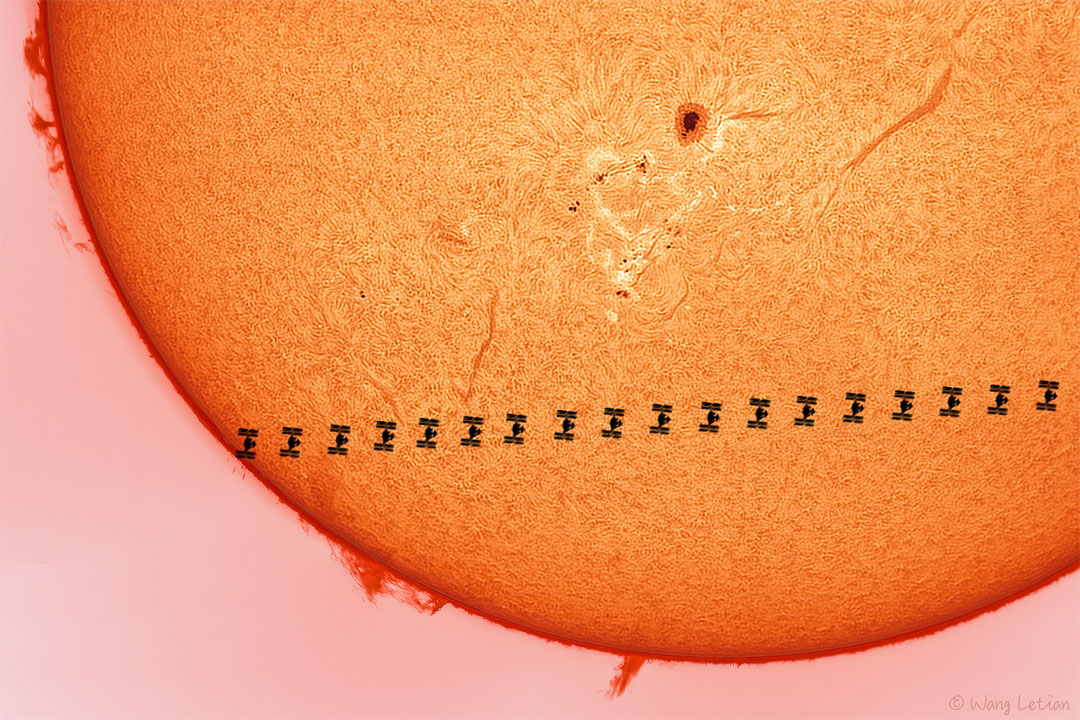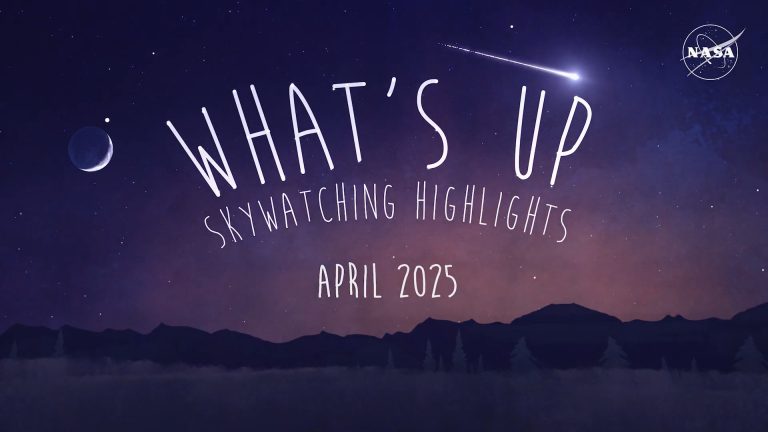2022年4月11日
A Space Station Crosses a Busy Sun
Image Credit & Copyright: Wang Letian (Eyes at Night)
Explanation: Typically, the International Space Station is visible only at night. Slowly drifting across the night sky as it orbits the Earth, the International Space Station (ISS) can be seen as a bright spot several times a year from many locations. The ISS is then visible only just after sunset or just before sunrise because it shines by reflected sunlight — once the ISS enters the Earth’s shadow, it will drop out of sight. The only occasion when the ISS is visible during the day is when it passes right in front of the Sun. Then, it passes so quickly that only cameras taking short exposures can visually freeze the ISS’s silhouette onto the background Sun. The featured picture did exactly that — it is actually a series of images taken earlier this month from Beijing, China with perfect timing. This image series was later combined with separate images taken at nearly the same time but highlighting the texture and activity on the busy Sun. The solar activity included numerous gaseous prominences seen around the edge, highlighted in red, filaments seen against the Sun’s face, and a dark sunspot.
Tomorrow’s picture: cosmic seahorse
太空站凌越活跃的太阳
影像提供与版权: Wang Letian(王乐天) (Eyes at Night)
说明: 国际太空站通常在夜间方可见。从许多地方看出去,大约每个月一次,国际太空站(ISS)会曳着亮斑缓缓掠过夜空。这种景象发生的时间点,大约是在甫日落之后或即将日出之前,国际太空站因为反射阳光而熠熠生辉,不过一旦它进入地球的影子里,当即匿迹而不可见。在白昼时,国际太空站只有在凌日时才得见。纵然在此时,它也是稍纵即逝,只有借助相机的短曝光,才能把国际太空站的剪影定格在后方的日盘上。上面这幅作为例证的主题影像,是由这个月稍早在中国.北京掌握完美时机拍摄的一系列照片组合而成。当时拍下的序列影像,后来再和几乎同时另外拍摄的数幅影像叠合,以突显日盘的节理及活跃太阳的活动。影像中可见的太阳活动,有位在临边为数众多的气态日珥、以日盘为背景的泛红暗条、和黝黑的太阳黑子。
明日的图片: cosmic seahorse







